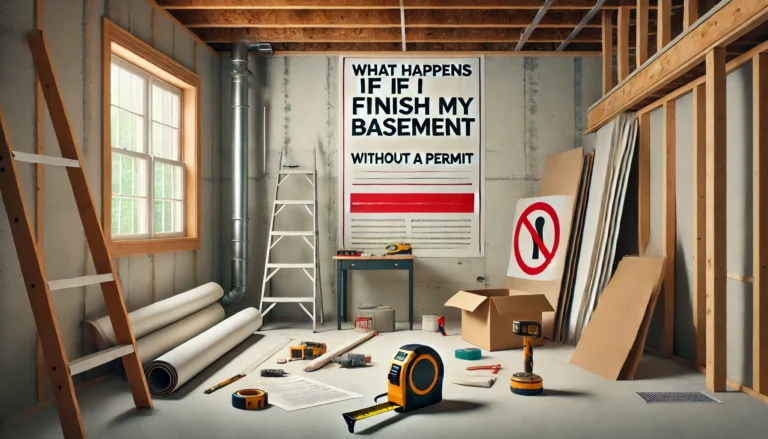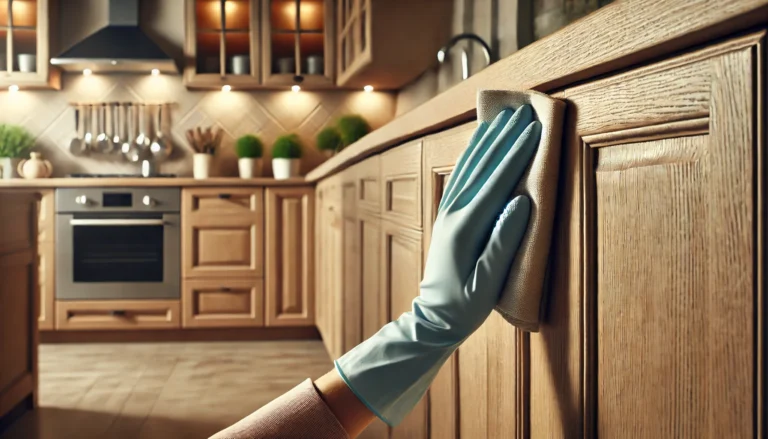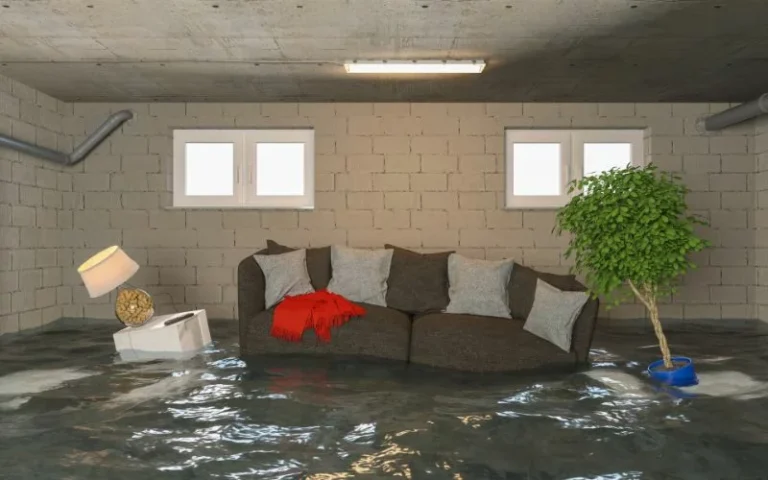How to Remove Moss from Pavers: The Ultimate Guide
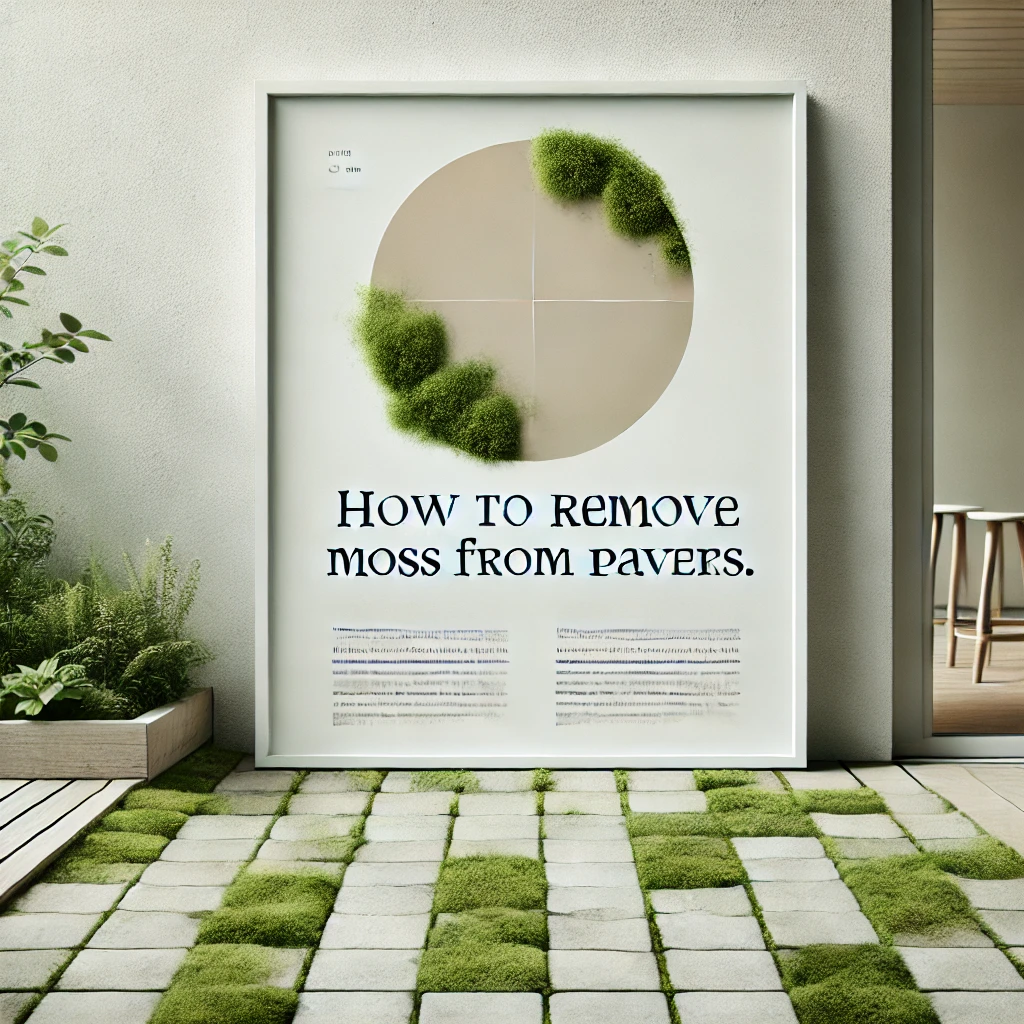
Introduction
Moss growing on pavers is a problem many homeowners face, especially in shady or damp areas. It might look harmless, but moss can make your pavers slippery and unsafe to walk on. It also makes your outdoor space look messy and can damage the surface of your pavers over time.
Removing moss from pavers is important for many reasons. It helps make your outdoor areas safer, improves how your patio or driveway looks, and protects the pavers so they last longer. Whether it’s a walkway, patio, or driveway, keeping moss away can save you time and money on repairs in the future.
In this guide, we’ll explore different ways to get rid of moss on pavers. You’ll learn about natural methods like using vinegar or baking soda, chemical solutions for stubborn moss, and tools for manual cleaning. With these simple tips, your pavers will look clean and fresh again in no time!
Why Does Moss Grow on Pavers?
Factors Encouraging Moss Growth
Moss loves moisture, shade, and organic debris like fallen leaves. These are the perfect conditions for it to grow on your pavers. Areas that stay damp or don’t get much sunlight, like patios, walkways, or driveways under trees, are more likely to have moss.
Seasonal changes also play a role. In the spring and fall, when it’s cooler and wetter, moss tends to thrive. It can spread quickly in areas with poor drainage or those that stay wet after rain or watering.
Is Moss on Pavers Bad?
Yes, moss on pavers can cause several problems. First, it can make the surface slippery, increasing the risk of slipping and falling. This is especially dangerous in areas with heavy foot traffic.
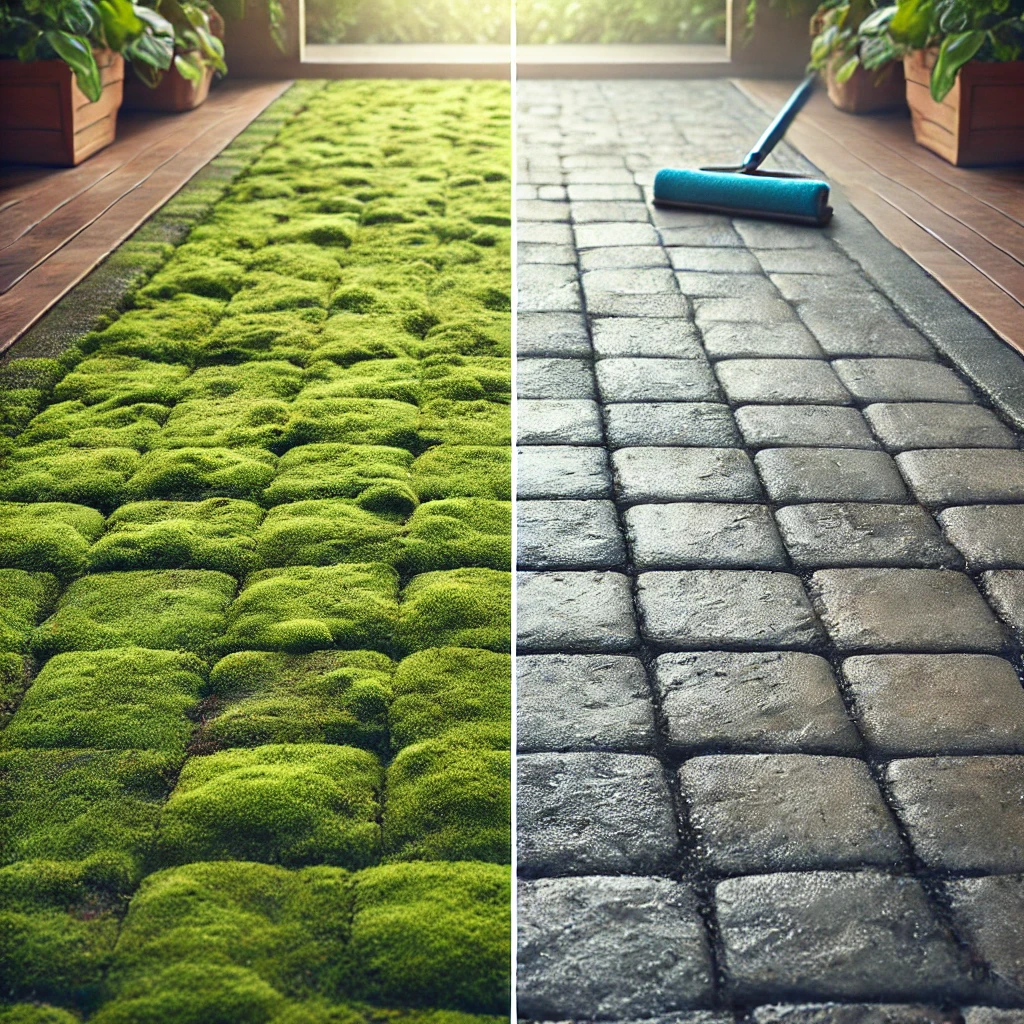
Second, moss can affect the appearance of your outdoor space, making it look dirty or neglected. Over time, moss can also damage the pavers themselves, leading to cracks or weakening the surface. If left untreated, it may even cause water damage as moss retains moisture, which can harm the integrity of the pavers.
How to Remove Moss from Pavers: Step-by-Step Guide
Manual Removal Methods
To remove moss manually from your pavers, you’ll need a few simple tools:
- Moss Scraper: A flat tool to scrape off the moss.
- Stiff-Bristle Brush: To scrub away any leftover moss.
- Broom: For sweeping the area clean once the moss is gone.
Step-by-Step Process for Manual Cleaning:
- Use the moss scraper to gently lift the moss off the pavers.
- Sweep away the loosened moss with a broom.
- If needed, scrub the remaining moss with a stiff-bristle brush, working in circular motions to lift the moss from the surface.
- Clean the area with water and allow it to dry completely.
Natural Remedies for Moss Removal
Using household items like vinegar or baking soda is a natural and eco-friendly way to remove moss.
Step-by-Step for Applying Natural Remedies:
- Vinegar Solution: Mix one part white vinegar with one part water.
- Pour the solution directly onto the mossy areas and let it sit for about 15–20 minutes.
- Scrub the moss with a brush and rinse with water.
Alternatively, you can mix baking soda and water into a paste, apply it to the moss, let it sit, then scrub and rinse. This is a good way to remove moss from pavers naturally.
Using Chemical Treatments to Kill Moss
If you prefer to use chemicals, there are commercial moss removers designed for pavers. These are effective for quickly killing moss.
Best Moss Removers for Pavers:
Look for products specifically labeled as moss or algae removers. Some popular choices are Wet & Forget, Moss Out, or Simple Green. Always read the instructions carefully to ensure proper use.
Safety Precautions When Using Chemicals:
- Wear gloves and protective clothing.
- Avoid using chemicals on plants or grass.
- Keep pets and children away during application.
Pressure Washing for Quick Results
Pressure washing is an efficient way to remove moss from pavers quickly. It uses high-pressure water to blast away moss and other debris.
How to Safely Use a Pressure Washer on Pavers:
- Set the pressure washer to a low or medium setting to avoid damaging the pavers.
- Hold the nozzle a few feet above the paver surface and direct the spray at the moss.
- Move the nozzle in sweeping motions, ensuring even coverage.
Pros and Cons of Pressure Washing:
- Pros: Quick, thorough cleaning; removes moss and debris in one go.
- Cons: Can damage delicate pavers if the pressure is too high; requires proper technique to avoid leaving watermarks or grooves.
While cleaning moss from pavers is essential, maintaining other outdoor surfaces, like balconies, is equally important. Check out our guide on how to clean a balcony for more tips.
Preventing Moss Growth on Pavers
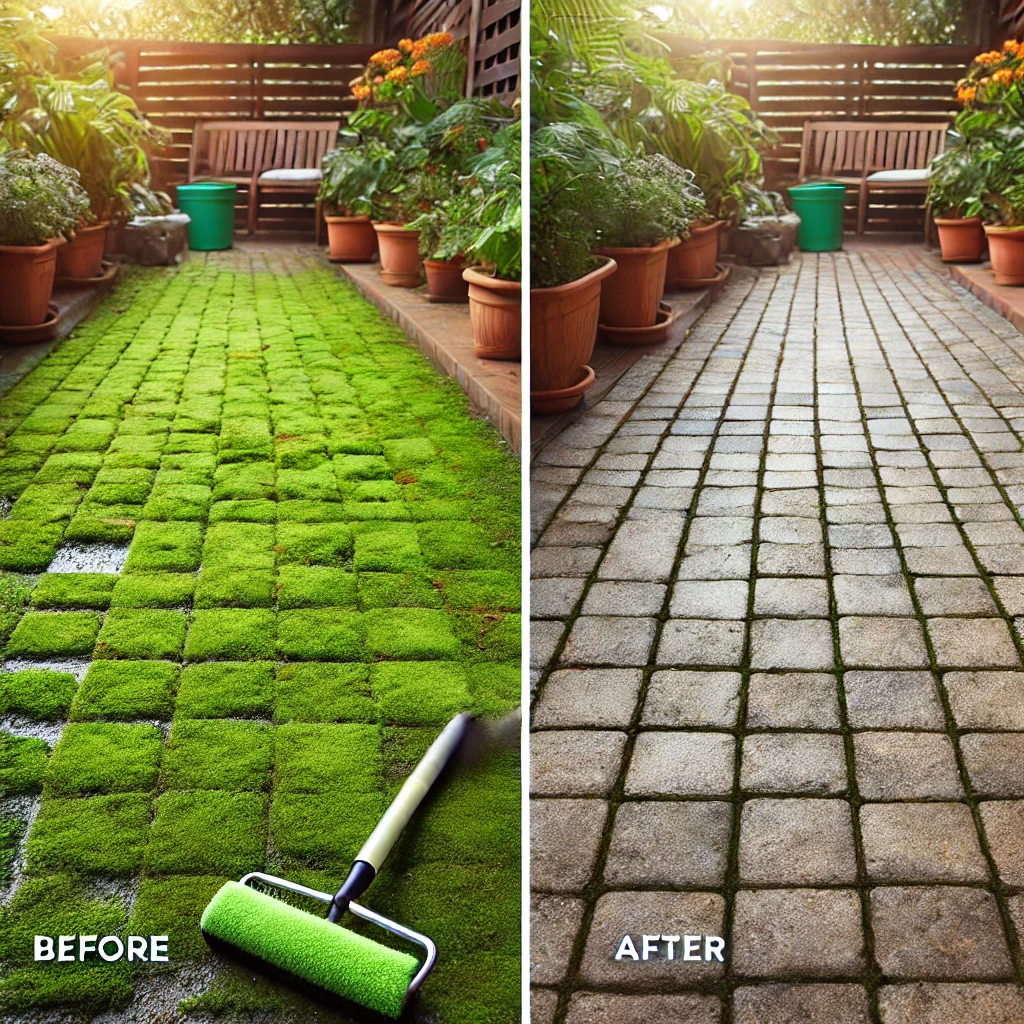
Preventing moss from growing on pavers is easier than dealing with it once it has taken root. By following some simple maintenance practices, you can keep your pavers clean and moss-free for a longer time. Here are some key strategies:
Regular Cleaning and Maintenance
One of the best ways to prevent moss from growing on your pavers is regular cleaning. Sweeping your pavers often helps remove leaves, dirt, and other organic debris that moss loves to thrive on. By preventing organic matter from accumulating, you reduce the moisture and nutrients that encourage moss growth. Additionally, you should consider hosing down the pavers occasionally to wash away any dirt that might collect in the joints.
Improving Drainage and Sunlight Exposure
Moss thrives in damp, shaded environments, so improving the conditions around your pavers can help prevent its growth. If you notice water pooling on your pavers, it’s essential to address the drainage issues. Ensure that your pavers are properly sloped to allow water to flow off and away from the surface. If necessary, you can add a layer of sand between the pavers to improve drainage.
Sealants and Protective Coatings
Applying a sealant to your pavers is another effective way to prevent moss growth. Paver sealants create a protective layer that prevents moisture from seeping into the pavers and the gaps between them, which reduces the conditions that moss needs to thrive. Additionally, a sealed surface can make it harder for moss spores to take root. When applying a paver sealant, make sure to clean the pavers thoroughly beforehand, and choose a sealant designed for outdoor use.
Real-Life Examples of Moss-Free Pavers
Before-and-After Photos of Successful Moss Removal
One homeowner removed moss from their backyard patio using a natural vinegar solution, transforming the dark, moss-covered surface into clean, bright pavers. Another example shows a driveway that was pressure washed, revealing its original, pristine look. These before-and-after results highlight the effectiveness of moss removal methods.
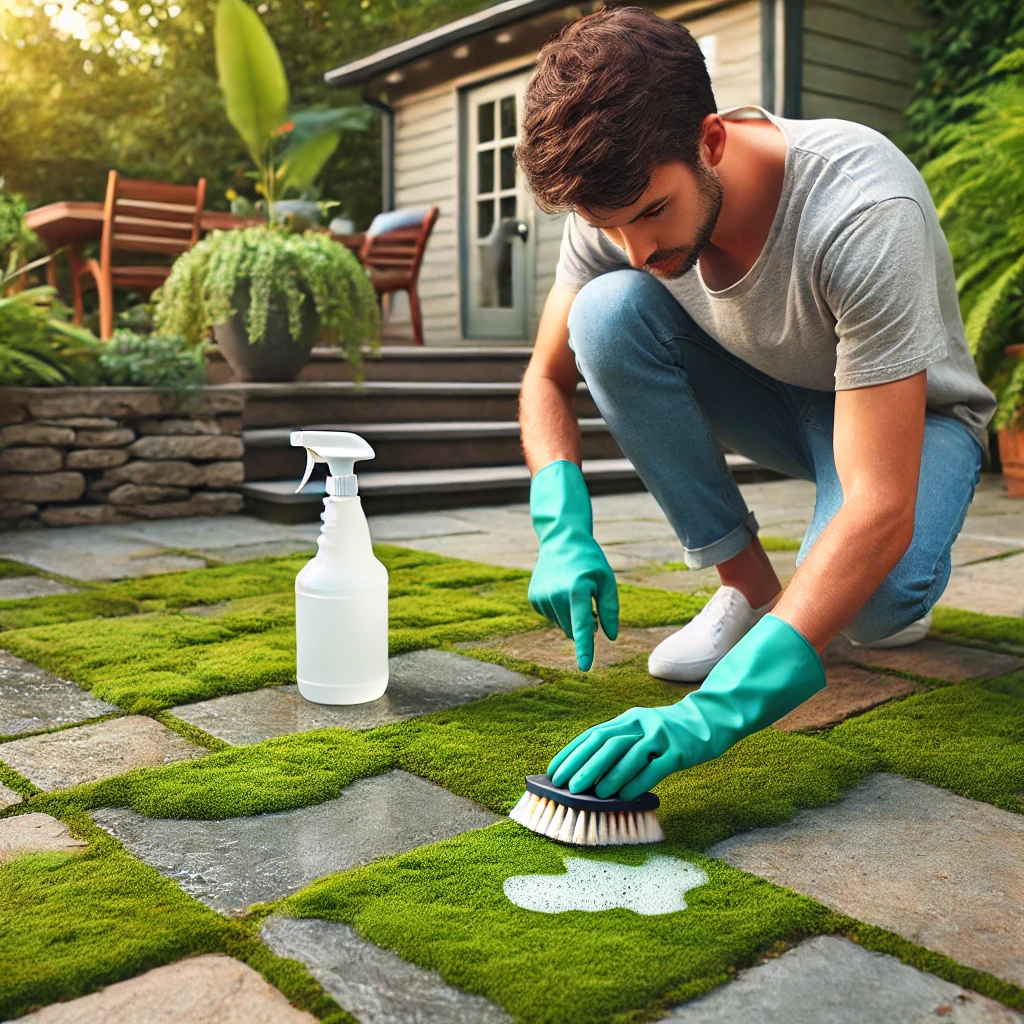
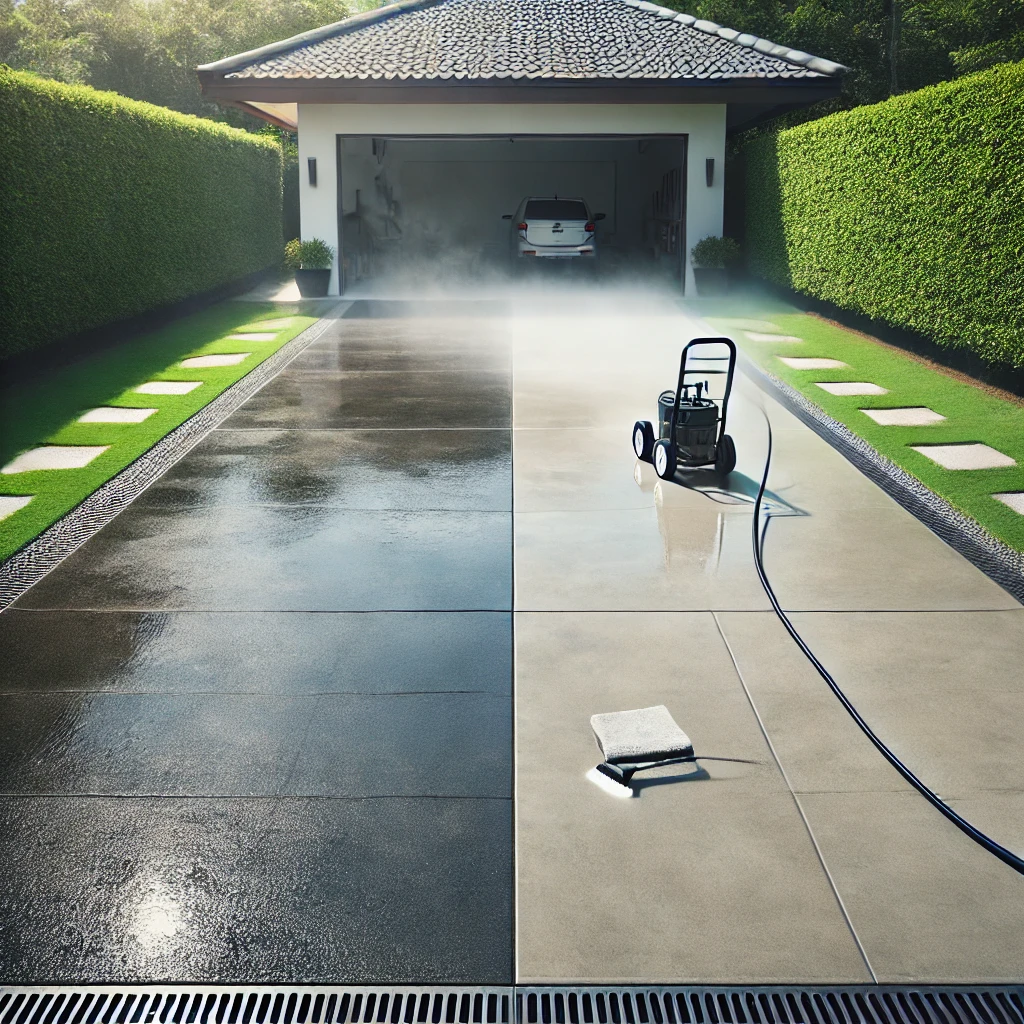
How Proper Care Enhances the Look and Lifespan of Your Pavers
Regular cleaning and sealing help keep pavers looking fresh and prevent moss buildup. Homeowners who maintain their pavers with simple steps, like sweeping and applying sealants, can enjoy clean, moss-free surfaces for years. This care also prolongs the pavers’ lifespan, saving money on replacements and repairs.
Conclusion
In summary, there are several effective methods to remove moss from pavers, including manual scraping, natural remedies like vinegar, chemical treatments, and pressure washing. Prevention is key, so regular cleaning, improving drainage, and applying sealants can keep your pavers moss-free. By maintaining your outdoor space, you not only enhance its appearance but also ensure a safer, longer-lasting surface for years to come. Keep your pavers clean and moss-free for a beautiful and functional outdoor area.


